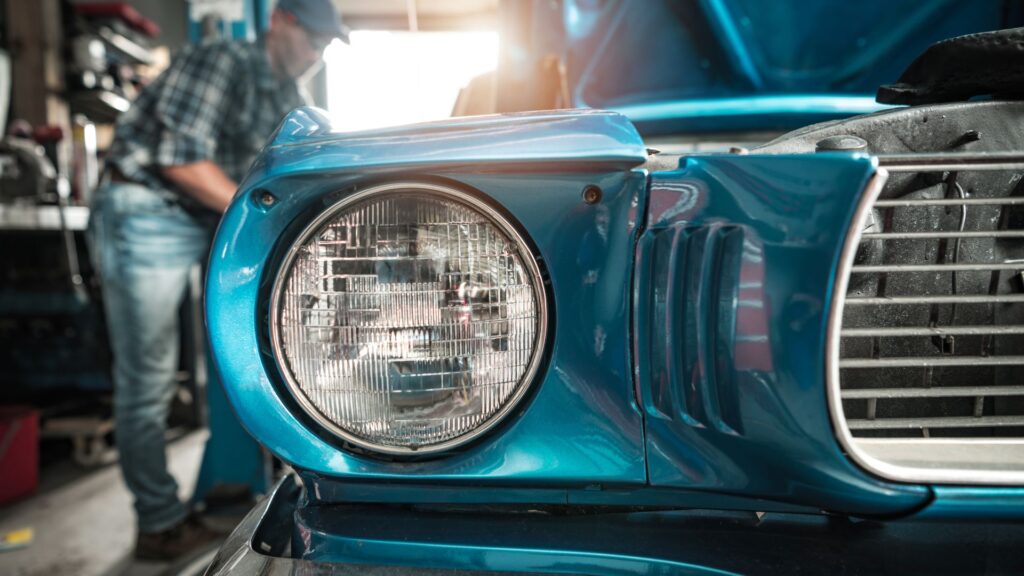How to Ship a Classic Car for Restoration: Best Practices and Tips

Shipping a classic car for restoration is a delicate process that requires careful planning and execution. Unlike modern vehicles, classic cars often have fragile parts, rare components, and unique restoration needs, making safe transportation a top priority. Whether you’re shipping a barn find across the country or sending a fully restored vintage beauty to a professional restoration shop, choosing the right transport method is crucial.
This guide will walk you through the best practices for classic car shipping, covering everything from choosing the right transport type to ensuring a smooth and damage-free delivery.
Understanding the Unique Needs of Classic Car Transport
Why Classic Cars Require Special Handling
Classic and vintage vehicles are often irreplaceable due to their rarity, custom modifications, or high-value components. Unlike modern cars, they may have:
✔ Fragile bodywork that can’t withstand exposure to harsh weather.
✔ Mechanical systems that require extra caution during transport.
✔ Hard-to-find replacement parts, making damage costly to repair.
Common Risks When Transporting Classic Cars
- Scratches, dents, or rust due to improper handling
- Exposure to weather conditions
- Mechanical damage from improper loading and unloading
How Restoration Affects Shipping Considerations
Some classic cars are shipped in non-running condition, meaning they require special handling such as winch loading. If your car is undergoing restoration, you must communicate this with the transport company to ensure they have the right equipment.
How to Prepare Your Classic Car for Shipping
Vehicle Preparation Checklist
- Document the current condition – Take detailed photos before transport.
- Remove loose items – Anything that might shift during transit should be secured.
- Check fluid levels and tire pressure – Ensuring the car is stable for transport.
- Disconnect the battery (if required) – Prevents electrical damage during transport.
Selecting a Reliable Classic Car Shipping Company
Key Factors to Consider
✔ Experience handling classic and vintage cars
✔ Positive reviews from other classic car owners
✔ Fully insured and licensed transport services
Questions to Ask
- How do you handle non-running classic cars?
- Do you offer enclosed transport options?
- What kind of insurance coverage is included?
Cost of Shipping a Classic Car for Restoration
Factors That Influence Cost
- Distance (longer distances cost more)
- Transport type (enclosed vs. open)
- Vehicle condition (non-running vehicles require special handling)
On average, enclosed transport costs 30-60% more than open transport, but it’s well worth the investment for classic car owners.
Insurance Considerations for Classic Car Transport
✔ Always confirm the insurance coverage provided by the transport company.
✔ Consider purchasing additional coverage for high-value classics.
✔ If damage occurs, document everything and file a claim immediately.
Common Mistakes to Avoid When Shipping a Classic Car
❌ Choosing the cheapest transport option without considering protection
❌ Failing to inspect the vehicle upon arrival
❌ Not reading the fine print on insurance policies
Tracking and Monitoring Your Classic Car During Transit
Most reputable transport companies offer GPS tracking, so you can monitor your car’s location in real-time. If the transport company does not offer tracking, ensure they provide regular updates on your vehicle’s status.
Receiving and Inspecting Your Classic Car Upon Delivery
✔ Inspect for any damage immediately upon arrival.
✔ Compare the vehicle condition with your pre-shipping photos.
✔ If there are any issues, document them and report them to the transport company.
Conclusion
Shipping a classic car for restoration requires careful planning, the right transport method, and working with a reputable shipping company. Enclosed transport is highly recommended for maximum protection, and thorough preparation ensures your vehicle arrives safely and in the same condition as when it was picked up.
By following these best practices, you can have peace of mind knowing your classic car is in good hands, ready for its restoration journey.
Latest articles

5 min read
Preparing Your Vehicle for Cross-Country Shipping
Shipping your car across the country requires more than just booking a transport service—it deman...

5 min read
The Role of Auto Transport Brokers vs. Carriers
When it comes to shipping a car, understanding the roles of auto transport brokers and carriers i...

5 min read
How to Choose Between Open and Enclosed Auto Transport
When shipping a car, one of the most critical decisions is choosing between open and enclosed aut...